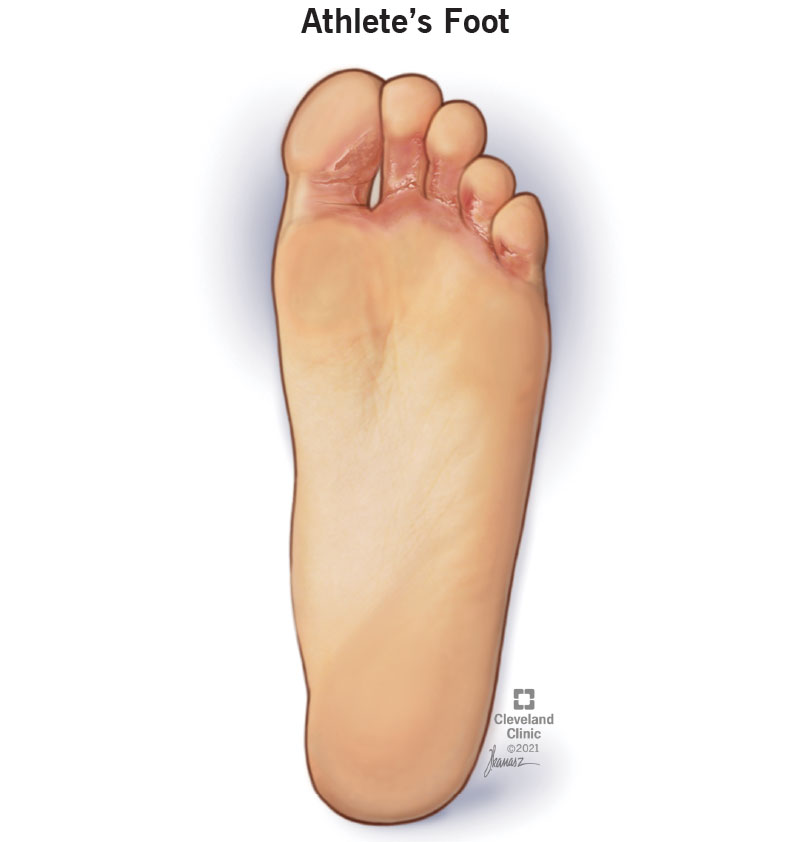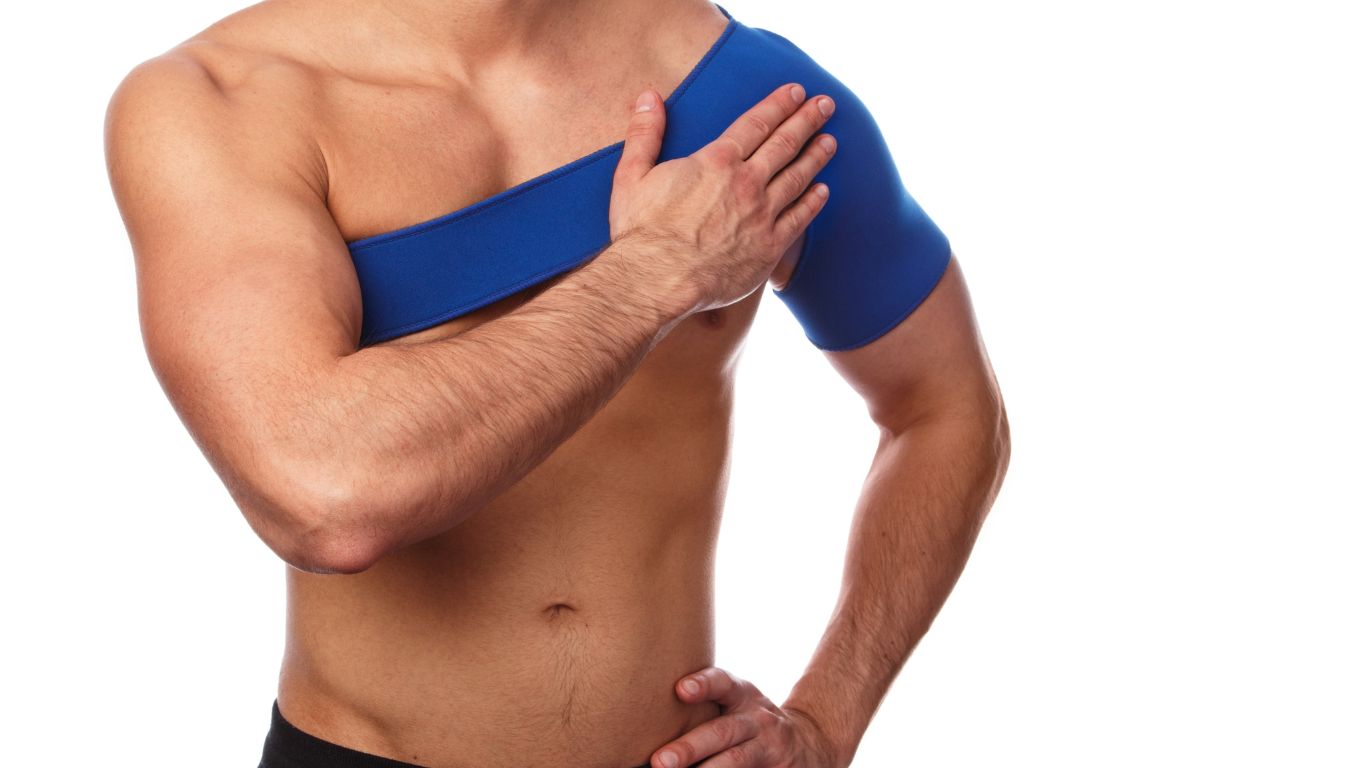To effectively treat athlete’s foot, use antifungal medications and maintain foot hygiene. Keep the feet dry and avoid shared footwear.
Athlete’s foot, a common fungal infection, can unconformably itch and burn between one’s toes. Characterized by peeling skin and redness, this pesky ailment thrives in warm, damp environments, often picked up in places like gym showers and pool decks. Tackling it head-on requires a strict regimen of both over-the-counter or prescription medications and vigilant self-care.
Ensuring your feet stay clean, dry, and aired out is key to not only treating but also preventing the spread of the infection. By following these straightforward steps and consulting a healthcare provider for persistent cases, individuals can regain comfort and foot health.
What Is Athlete’s Foot?
Athlete’s foot, or tinea pedis, is a skin infection caused by fungal growth on the feet. It’s highly contagious and can spread easily. Common in environments that are moist and warm, it’s no friend to athletes, hence the name.
Symptoms To Watch For
It’s essential to recognize symptoms early to treat athlete’s foot effectively. Look out for:
- Itching or burning between your toes or on the soles of your feet
- Cracked, flaky, or peeling skin, especially between the toes
- Redness or blisters that may ooze or crust
- Stinging and discomfort when putting on socks or shoes
- Thick, crumbly nails that pull away from the nail bed
Causes And Risk Factors
Athlete’s foot stems from a fungal infection. Certain conditions increase risk:
| Cause/Risk Factor | Description |
|---|---|
| Wet environments | Fungi thrive in swimming pools, showers, and locker rooms. |
| Tight footwear | Shoes that trap moisture create a breeding ground for fungi. |
| Sharing items | Towels or shoes carry the infection between users. |
| Sweaty feet | Excess moisture increases the chance of fungal growth. |
| Minor skin or nail injuries | Openings in the skin allow fungi easy access. |
Identifying these signs and causes can prevent spread and onset of athlete’s foot.
First Steps To Treat Athlete’s Foot At Home
Are you dealing with the pesky itch of Athlete’s Foot? Fear not! Begin your road to recovery with effective home treatments. Let’s jump right into these steps!
Basic Hygiene Practices
Keeping feet clean and dry is crucial. Bacteria thrive in moist areas, worsening the infection.
- Wash your feet with soap and water daily.
- Make sure to dry between your toes after washing.
- Change socks regularly, especially if you sweat a lot.
- Wear shoes that let your feet breathe.
- Always wear footwear in communal areas like gyms.
Home Remedies To Try
Some natural ingredients can fight the fungus causing Athlete’s Foot. Here are a few you can try:
- Tea Tree Oil: A natural antifungal. Apply it with a cotton swab.
- Garlic: Crush and apply on your feet. Its antifungal properties help.
- Vinegar Soaks: Mix one part vinegar to two parts water, soak feet for 20 minutes.
- Baking Soda: Sprinkle inside shoes to absorb moisture.
Remember, these remedies may help, but consult a doctor if symptoms persist.
Antifungal Treatments: Your Best Choice
Fighting athlete’s foot means using antifungal treatments. They are the best choice to beat this itchy problem. Antifungal treatments attack the fungus. They stop it from growing. Your feet will feel better fast.
Over-the-Counter Options
Over-the-counter Options
Many products are available without a prescription. They are easy to find and use. Creams, sprays, and powders fit different needs. Here are some popular options:
- Clotrimazole – This cream fights a variety of fungi.
- Miconazole – Another cream option that’s also effective.
- Tolnaftate – Comes as a powder or spray for convenience.
- Terbinafine – Found in creams, this one targets the infection quickly.
Apply these treatments as the label directs. Use them daily for best results. Don’t stop early even if symptoms improve.
Prescription Medications
Prescription Medications
Some cases need stronger medicine. A doctor can prescribe these. They often come as pills. Some might be creams or ointments. Here’s a list of prescription options:
| Medication Type | Common Names | How It Works |
|---|---|---|
| Pills | Itraconazole, Fluconazole | Attack the fungus from within. |
| Creams/Ointments | Ketoconazole, Ciclopirox | Stronger form for direct application. |
Doctors may suggest using these along with the over-the-counter options. This dual approach hits the fungus hard. Remember, prescription treatments require medical advice. Always follow the doctor’s instructions.

Credit: footwearnews.com
Lifestyle Adjustments To Prevent Reinfection
Beating athlete’s foot isn’t just about treatment. It’s also about making smart changes in your daily life. These changes can help you avoid getting this itchy problem again. Let’s explore how focusing on your footwear and socks, plus your environment and habits, can make a big difference.
Footwear And Socks
Your feet need to stay dry and clean. This keeps athlete’s foot away. Think about these tips:
- Choose shoes that breathe. This means they let air in and out to keep your feet dry.
- Switch shoes daily. Don’t wear the same pair twice in a row. Give them a day to air out.
- Wear socks that wick moisture away. They pull sweat off your skin. This helps keep your feet dry.
- At home, go barefoot or wear sandals. Your feet will get more air, and that’s good to prevent athlete’s foot.
- Never share footwear. Other people’s shoes and socks could spread the fungus to your feet.
Environment And Habits
The places you go and the things you do can also affect your foot health. Good habits are your best friends:
- Dry your feet well after washing them. Pay special attention between your toes.
- If you use public showers or pools, wear flip-flops or water shoes. This keeps your feet away from the fungus on the floor.
- Clean your shower and bathroom regularly. Fungus loves damp places.
- Use antifungal sprays or powders in your shoes and on your feet. This can kill any lingering fungus.
- If your feet sweat a lot, change socks during the day. Keep your feet as dry as possible.
Remember, these simple steps can make your feet a no-fungus zone!
When To Seek Professional Help
Athlete’s foot can often be managed with home treatments. But not always. Knowing when to seek professional help is key to preventing further infection. If over-the-counter remedies fail or the infection worsens, it’s time to consult a doctor. Here’s what to watch for:
Signs Of Complications
- Increased redness or swelling indicating an escalation.
- Blisters or sores that don’t heal can signal bacterial infection.
- Persistent itching despite treatment suggests a deeper issue.
- Discolored nails may show the fungus has spread.
- Pain or discomfort that disrupts daily activities needs attention.
Finding A Specialist
Not sure where to turn? Look for a qualified podiatrist or dermatologist. These experts specialize in foot and skin health.
| Specialist Type | What They Treat | How They Help |
|---|---|---|
| Podiatrist | Foot and lower limb conditions. | Offers treatment plans for foot infections. |
| Dermatologist | Skin infections and disorders. | Prescribes medication for skin-related issues. |
Begin with your primary care provider for a referral. Or, check with your insurance for covered specialists. Don’t let athlete’s foot slow you down any longer. Seek expert help and step towards recovery.

Credit: www.netmeds.com
Alternative Remedies And Supplemental Care
Tackling athlete’s foot can happen outside the pharmacy too. Natural remedies and diet changes might offer relief. Let’s find out how.
Natural And Herbal Options
Nature offers its own medicine cabinet. Herbal remedies can support healing from athlete’s foot.
- Tea Tree Oil: This has potent antifungal properties. Apply directly on the affected area twice daily.
- Garlic: Known for its antifungal substance, ajoene. Crush garlic into a paste and apply it to the feet.
- Apple Cider Vinegar: It may kill fungus. Mix one part vinegar with three parts water for a foot soak.
- Yogurt with live cultures: The L. acidophilus in plain yogurt fights fungus. Apply it topically and let it dry.
Dietary Considerations For Skin Health
Diet affects skin health. Boost your skin’s fungus defenses with smart food choices.
| Food Group | Benefits |
|---|---|
| Probiotics | They balance good bacteria, which can fight off skin infections. Include yogurt and kefir. |
| Protein-rich foods | Essential for skin repair. Opt for lean meats, beans, and nuts. |
| Omega-3 Fatty Acids | They reduce inflammation. Eat more fish, chia seeds, and walnuts. |
| Antioxidants | Support skin health. Focus on colorful fruits and vegetables. |

Credit: my.clevelandclinic.org
Frequently Asked Questions Of How To Get Rid Of Athlete’s Foot
What Kills Athlete’s Foot Fast?
Antifungal creams or sprays, such as terbinafine or clotrimazole, can kill athlete’s foot quickly. Apply as directed for best results.
Can Athlete’s Foot Go Away On Its Own?
Mild athlete’s foot can sometimes resolve without treatment. Persistent or severe cases require antifungal medication for proper healing.
What Causes Athlete’s Foot?
Athlete’s foot is caused by fungal infections, typically from the tinea fungus. Warm, moist environments, such as sweaty feet in tight shoes, encourage fungal growth.
How Contagious Is Athletes Foot?
Athlete’s foot is highly contagious, spreading through direct contact or by touching contaminated surfaces like towels, shoes, or floors. It thrives in warm, moist environments. Always keep feet dry and avoid shared spaces barefoot to prevent transmission.
Conclusion
Battling athlete’s foot can be daunting, but it’s not insurmountable. By embracing a diligent foot care routine and using the right treatments, relief is within reach. Remember to keep your feet dry, clean, and give those antifungal products time to work.
Victory over this pesky fungus is just a few steps away, ensuring your feet stay healthy and comfortable.









